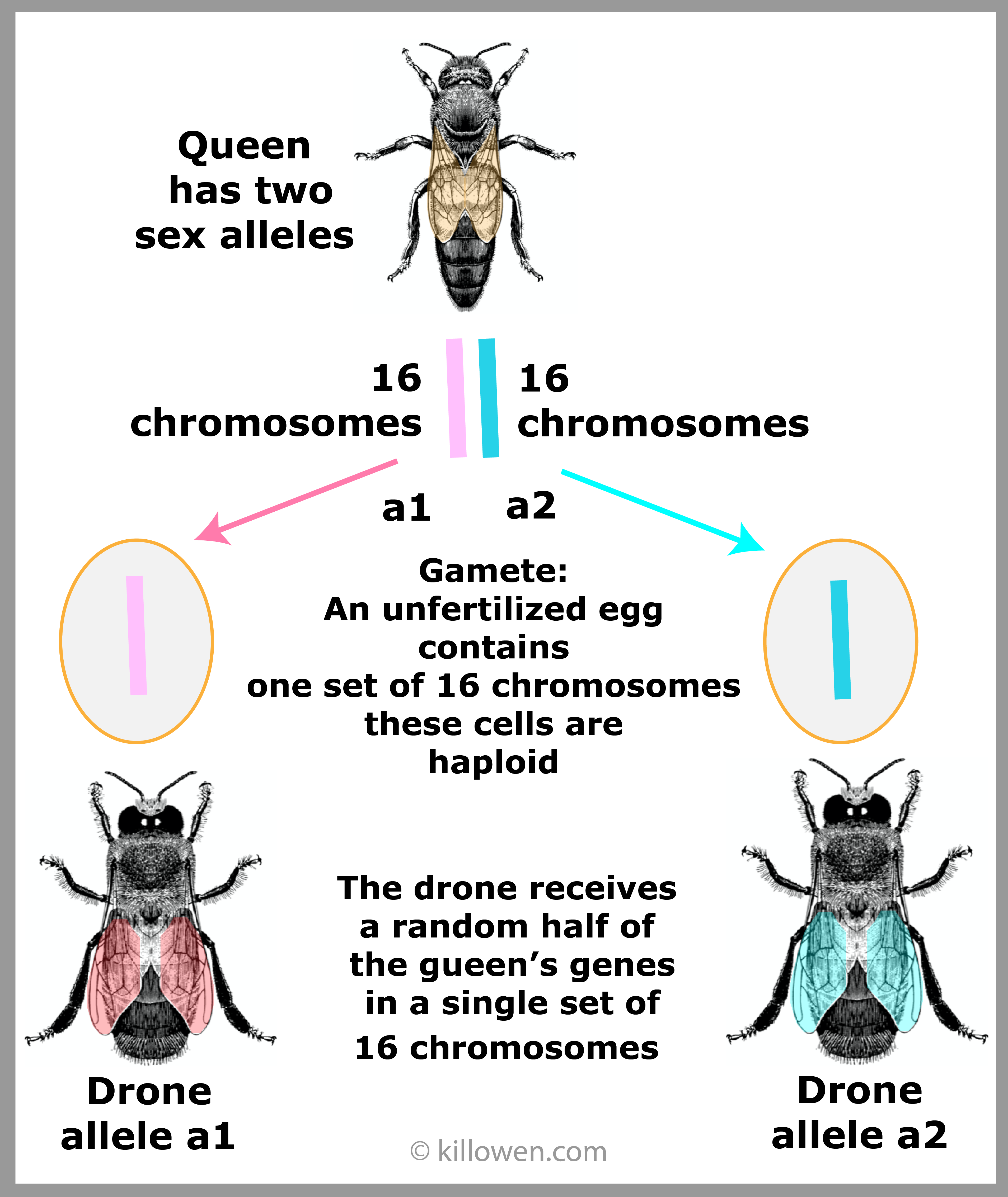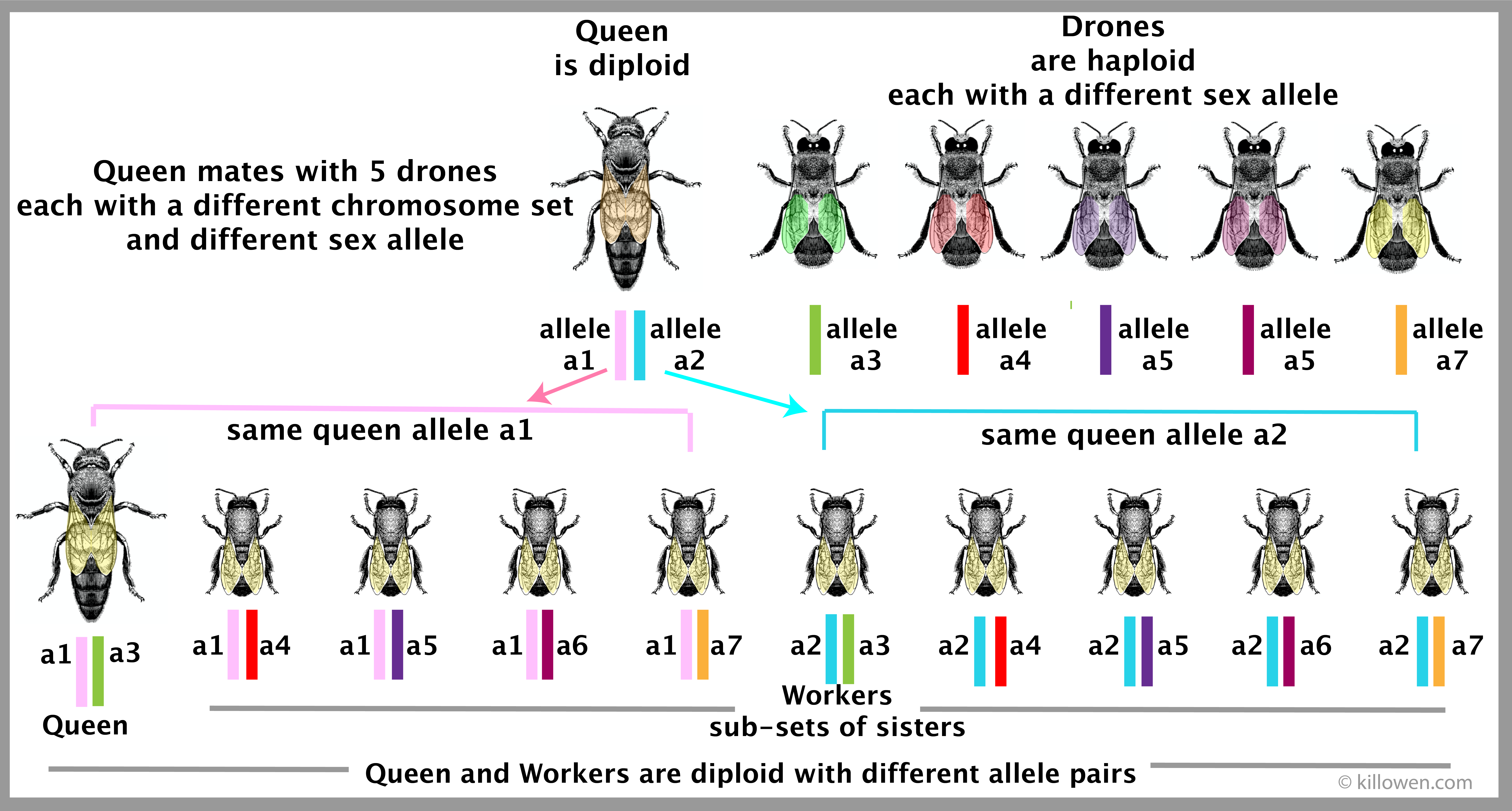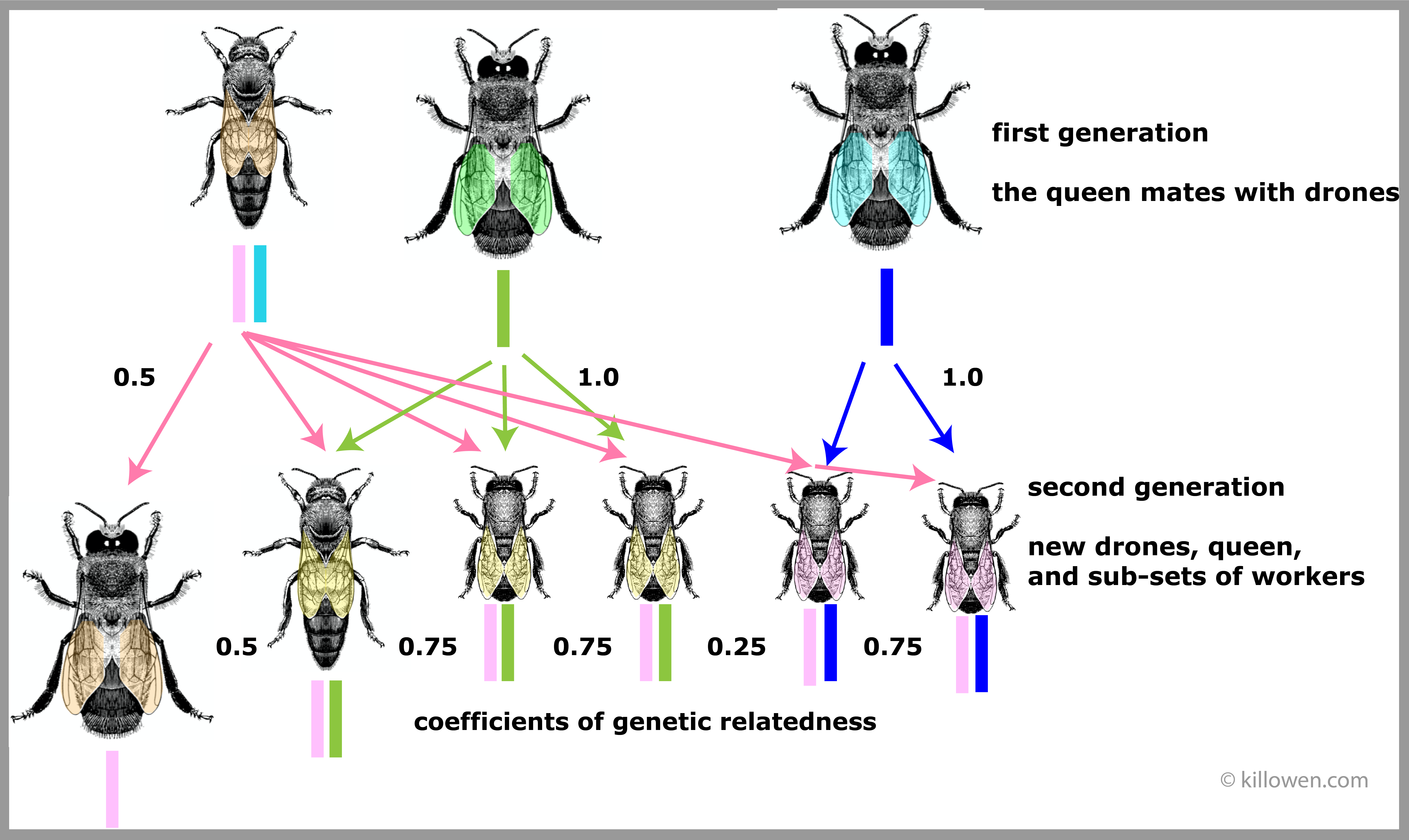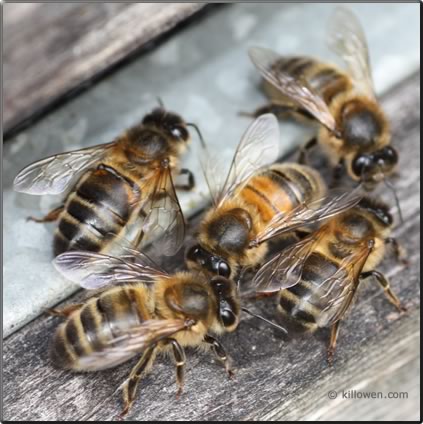Genetics 2C
Genetics of the Drone
The queen possesses two sets of 16 chromosomes each associated with a sex allele (a1 and a2). Thus the egg laid by the queen contains a set of 16 chromosomes which is associated with either allele a1 or a2. This unfertilized egg which produces a drone is haploid. Because of crossover and the random arrangement of the chromosomes at the metaphase during meiosis each drone is of a unique genotype, i.e. the drone's haploid set of sixteen chromosomes is obtained from a random selection of the queen's diploid set. This makes each drone genetically unique. This has been simplified on the diagram.
Since each drone has only one set of 16 chromosomes its sperm can only contain that single set of 16 chromosomes. All sperm from a single drone are clones.
So whereas the egg which the queen lays has a great deal of generic diversity because of crossing over, the sperm from the drone has none.
The queen possesses two sets of 16 chromosomes each associated with a sex allele (a1 and a2). Thus the egg laid by the queen contains a set of 16 chromosomes which is associated with either allele a1 or a2. This unfertilized egg which produces a drone is haploid. Because of crossover and the random arrangement of the chromosomes at the metaphase during meiosis each drone is of a unique genotype, i.e. the drone's haploid set of sixteen chromosomes is obtained from a random selection of the queen's diploid set. This makes each drone genetically unique. This has been simplified on the diagram.
Since each drone has only one set of 16 chromosomes its sperm can only contain that single set of 16 chromosomes. All sperm from a single drone are clones.
So whereas the egg which the queen lays has a great deal of generic diversity because of crossing over, the sperm from the drone has none.
Genetic diversity
The multiple mating of the queen in which 10 drones or more might be involved ensures that only a small number of them will share the same sex alleles as the queen. By instinct the queen collects a mix of sperm which ensures that there is a maximum amount of genetic diversity in the hive.
The diagram above summarizes the genetic relatedness between the bees within a colony. Each worker belongs to a sub-set of sisters having the same father and sharing 75% of their genes, i.e. they share 50% of the queen's genes but 100% of the drone's.
However, the different sub-sets of workers share the same mother but have different fathers and hence only share 25% of their genes. This genetic difference in relationship has many effects on the life and work of the colony.
And a new drone only inherits 50% of its mother's genes.
The genetic shuffle which starts with crossing over of genes before meiosis and continues with the random shuffle of chromosomes at the metaphase stages, ensures that the egg so formed already contains a genetic mix before fertilization; making each bee in the colony genetically unique.
The multiple mating of the queen in which 10 drones or more might be involved ensures that only a small number of them will share the same sex alleles as the queen. By instinct the queen collects a mix of sperm which ensures that there is a maximum amount of genetic diversity in the hive.
The diagram above summarizes the genetic relatedness between the bees within a colony. Each worker belongs to a sub-set of sisters having the same father and sharing 75% of their genes, i.e. they share 50% of the queen's genes but 100% of the drone's.
However, the different sub-sets of workers share the same mother but have different fathers and hence only share 25% of their genes. This genetic difference in relationship has many effects on the life and work of the colony.
And a new drone only inherits 50% of its mother's genes.
The genetic shuffle which starts with crossing over of genes before meiosis and continues with the random shuffle of chromosomes at the metaphase stages, ensures that the egg so formed already contains a genetic mix before fertilization; making each bee in the colony genetically unique.


Genetics of the Queen and Workers
The diagram above illustrates the situation when the queen mates with a number of drones. (5 drones are shown for simplicity on the diagram but 10 is the norm).
The drones are haploid each assumed to have a different set of 16 chromosomes each with a different sex allele.
The queen is diploid with 2 sets of 16 chromosomes with 2 sex alleles. The queen lays an egg with one set each of 16 chromosomes and 1 allele, but now this egg is fertilized by sperm from the drone.
The result is a worker having 2 sets of 16 chromosomes and a combination of 2 alleles. (A queen may result instead of a worker but she will have the same 2 sets of 16 chromosomes and 2 associated alleles.) The queen and workers are thus diploid.
The diagram above illustrates the situation when the queen mates with a number of drones. (5 drones are shown for simplicity on the diagram but 10 is the norm).
The drones are haploid each assumed to have a different set of 16 chromosomes each with a different sex allele.
The queen is diploid with 2 sets of 16 chromosomes with 2 sex alleles. The queen lays an egg with one set each of 16 chromosomes and 1 allele, but now this egg is fertilized by sperm from the drone.
The result is a worker having 2 sets of 16 chromosomes and a combination of 2 alleles. (A queen may result instead of a worker but she will have the same 2 sets of 16 chromosomes and 2 associated alleles.) The queen and workers are thus diploid.


Although I like to think that my bees are fairly pure black bees, occasionally bees with yellow tergites appear in a colony. It can only be assumed that the queen has mated with a Buckfast drone from somewhere nearby.
This observation illustrates the genetic diversity which is present in all colonies in spite of what the beekeeper might otherwise want.
This observation illustrates the genetic diversity which is present in all colonies in spite of what the beekeeper might otherwise want.